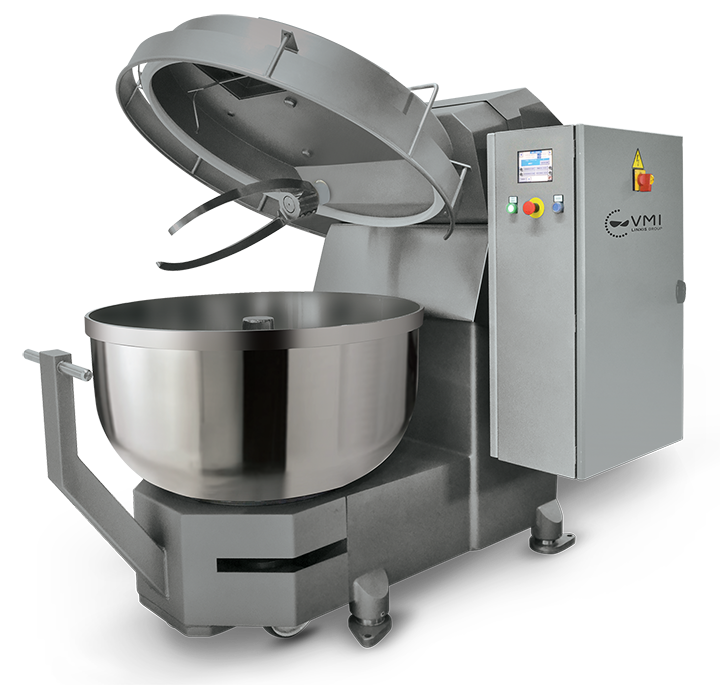
+ The 19th century is quite rightly regarded as the time when mechanization gained momentum in many industries, as it promised to do away with tedious and laborious manual work. Some also hoped that it would protect people from unhygienic and unhealthy working conditions.
In contrast to Northern and Eastern Europe, both France and Italy almost exclusively use wheat for bread baking. Compared to today, however, the flours available in earlier times were weak in gluten and therefore demanding to process. The manual kneading process was lengthy and had to be divided into different phases. These included the integration of the sourdough starter (levain-chef, madre) and the uneven feeding of the other raw materials. The doughs previously had to be mixed, kneaded, stretched, beaten and aerated, and rested repeatedly in between. Dough making, therefore, required not only time and muscle power but also intellect and sound education.
Enthusiasm from master bakers and dough makers for the first inventions of mechanical dough makers was nevertheless slow in coming, and not only because some feared for their jobs. The practicality of the mechanization experiments and their savings potential were also seen as limited. But the loss of manpower due to the countless wars in which European countries on all continents were involved, and not least World War I, in which millions of young men lost their lives, prompted bakery entrepreneurs to look for support from machines.
One such kneader, the ‘Victorieux’ developed in 1880 had recorded more than
500 sales by the end of the 19th century. The development of this forerunner to all fork kneaders was based on the manual process, until 1964, when Michel Bouton developed the Mahot fork mixer, with the Mahot company at the origin of the Victorieux. Today, the ‘Maison Mahot’ brand belongs to the French machine manufacturer VMI, which still maintains the tradition of fork kneaders and thus the tradition of French dough production. In Italy, too, various manufacturers have fork kneaders in their programs.
There are a number of factors that make bakeries turn to this type of technology. The interplay of fork and vat geometry ensures optimum oxidation of the doughs without them becoming ‘stubborn’ and prevents the temperature from rising too high. Fork kneaders are therefore recommended above all others for doughs that need to absorb a lot of water but do not require the addition of chemical additives. The main areas of application are baguettes, pizzas, brioche, shortcrust doughs and viennese pastries.
Today’s fork kneaders are often supplied with a removable bowl, driven by a belt. In contrast, traditional machines with fixed bowls are driven by wheel and screw or by way of conical gear. Vat sizes vary. VMI, for example, offers fork-type kneaders with a fixed bowl in bowl sizes for up to 160kg of dough and with a removable bowl in bowl sizes for up to 530kg of dough.
In the meantime, the fork kneader has also made the leap into complex systems for dough preparation with multi-shift operations. Carousels consist of a raw material feed, one or more kneaders, and several dough resting places, as well as linear systems. These also prepare the doughs with one or more kneaders, which then transfer the kettles to automatically controlled rack storage for dough resting, from which the doughs are automatically retrieved according to the process control and transported in kettles to the next processing station. For many years now, such installations have been found, amongst others, in companies specializing in the production of high-quality frozen baguettes and crusty breads. +++
Sources:
+ Chiron, H.: “Les différentes étapes de la mécanisation du pétrissage en France”, erschienen
in “Industries des Céréales” July/August/September 1993.
+ Busas, M.: “Changes in bread production”, student research project, published by Grin Verlag
in 2000.
+ VMI Produktkatalog Removable bowl fork mixer, Fixed Bowl Fork Mixer




